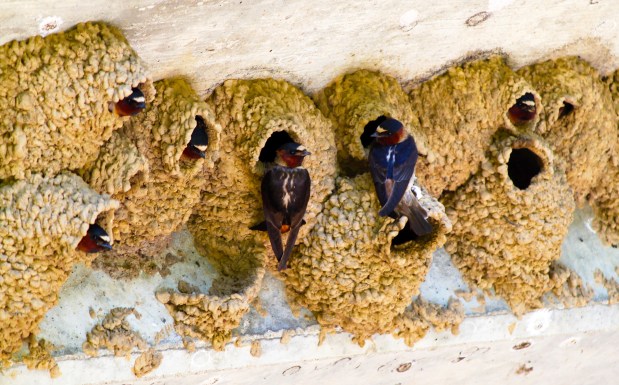For more than 20 years, my serviceberry tree has gifted the birds and me with small, round fruits that taste like almonds when you bake them in muffins. This year, it produced another huge crop, and that would be the last time I would harvest berries from the beloved tree.
Serviceberries are short-lived in the plant world, and this one succumbed to old age with decaying leaves and dead branches after its final production this summer.
It is gone from my backyard now, having taken up the same space where a catalpa tree once grew. Decades ago, the catalpa had to be removed.
When you lose a tree, just as when you lose a beloved pet, the sadness and the memories, including joyful ones, sneak up on you.
The first and only time I saw a red-headed woodpecker in my backyard was when it landed on the catalpa tree. The only time I’ve ever seen an evening grosbeak, a northerly visitor, in my yard, was also on the catalpa tree. A sunflower feeder hanging from the tree attracted the grosbeak, another one-day wonder I associate with that beautiful tree.
After I mourned the loss of the catalpa, I planted a serviceberry because it’s a native understory tree that feeds birds — and humans — in late June. It took several years before we got enough berries for muffins and for the birds. I remember one year my husband climbing on a ladder to pick some of the small juicy fruits, and me making a serviceberry pie mixed with blueberries. Meanwhile, critters, no doubt squirrels, were planting catalpa trees, two of which are now quite tall in the yard.
Just when we noticed the serviceberry needed to be cut down, a huge limb fell off a 150-year-old silver maple that stands in the back of our yard. My husband never liked that tree. He said silver maples are less attractive to birds than oaks. But silver maples are native to Illinois, and over the years it has offered comfort with its wide, sweeping arms that embrace most of the yard.
When a big chunk of a limb fell to the neighbor’s roof, my husband admitted he didn’t want to see the tree go. We were able to have the limb removed, and the rest of the tree was saved.
Sitting under the maple we noted a wide open space in the sky we hadn’t seen before the limb had fallen and the serviceberry was felled. A turkey vulture soared in its typical dihedral form, and we wondered what other birds we might start seeing in the sky from our yard.
Plus, more sun would shine on the yard now, and we might be able to install some more prairie plants. Other prairie plants were being shaded out in another part of the yard by a volunteer, but welcome, shagbark hickory tree.
While sitting beneath the maple, I thought of my old homestead in Hickory Hills, where several large, big old oak trees loomed in the yard. We could sit at the kitchen table on the second floor of the home and see one of the oaks up close.
Back then, I didn’t know the importance of oak trees to our northern Illinois ecosystems and to birds. But my mother pointed out to me one day that a screech owl was nesting in one of the open cavities in an oak. She also introduced me to a type of woodpecker, called a flicker, that flared lemon yellow underwings when flying. It, too, nested in the oak tree.
The Old English word for tree was treow and it meant not only tree, but also promise and trust. Decades later, I whisper a thanks to my mom for having introduced me to the beauty of trees and birds, and instilled in me the promise of what can be found in the natural world any day.
From that came a life of adventure in the wild filled with dragonflies, damselflies, butterflies, moths, sloths, howler monkeys, giraffes, baobab trees, compass plant, purple prairie clover, bumblebees and so much more. I wish she had been with me these past few decades to share in the joys of getting to know the natural world.
Sheryl DeVore has worked as a full-time and freelance reporter, editor and photographer for the Chicago Tribune and its subsidiaries. She’s the author of several books on nature and the environment. Send story ideas and thoughts to sheryldevorewriter@gmail.com.




